
|
|
|
|
|
Jack the Lizard is on YouTube |
|
Your house is on fire and your children are gone All except one, and that's Little Anne For she has crept under the warming pan. |

|
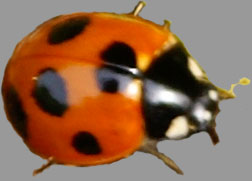
Coccinellidae is commonly called ladybird in most of English spoken countries and ladybug in North America. The size is about a millimeter to 1 centimeter. The red round tiny insect is one of the most popular insects of children in the world, and it is a sign of luck in many of different cultures in the world. There are more than 5,000 different kinds of coccinellids. Some are red with black dots, some are orange, some are black with red dots, entirely brown or black, and so on. They are one of the insects emerge into the field early spring as if they told that spring arrival. Coccinellidae is an insect. Therefore the body structure consists of 3 parts, head, thorax, and abdomen. There is a pair of antennas and compound eyes on head and six segmented legs are attached to thorax. There is a pair of thin wings underneath of a pair of thick hard wings covers on its back, just as the other beetles have. Some coccinellids are predatory and some are herbivorous. Commonly found the Seven-spotted Ladybug (Coccinella septempunctata) is a predator. They feed on aphids or scale insects, so they are appreciated by farmers due to the ladybugs eat up the pest harmful to their farm products. Ladybugs also become prey for another insect. For instance Dinocampus coccinellae is a kind of wasps which lay their eggs inside of ladybugs. The hatched larvae wait for end of winter. Then the larvae emerge and spin a cocoon underneath of the dead ladybugs. |
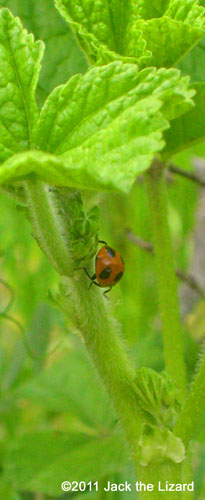
|
Cycle of life
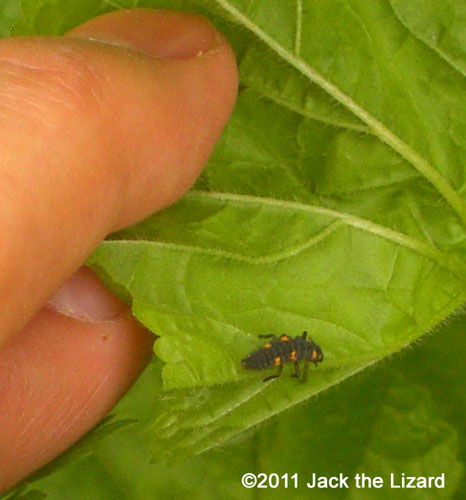
|
They hatch from eggs in about 2 to four days. During the larvae stage of about 10 to 14 days, they shed their skin several times. Their food is aphids or scale insects just as adult coccinellids. A larva consumes about 350 to 400 aphids before becoming pupa. After about a week of pupation at sunshiny locations, it turns to be an adult. The life span is one to two years. After mating, female coccinellids lay about 5 to 20 of eggs on plants where many aphids are around. Cautiously some unfertilized eggs are laid together in case of lack of food for larvae to feed on. In addition to that they stop laying eggs in the season when food source are limited. To pass the winter they move to warmer places, from higher altitude to lower, into shelters such as the place between rocks, beneath of fallen leaves bed in the forest, underneath of houses and so on. Surprisingly some species can survive at the temperature of minus 20 C. Also they can learn spring arrival from the change of day time and temperature. |
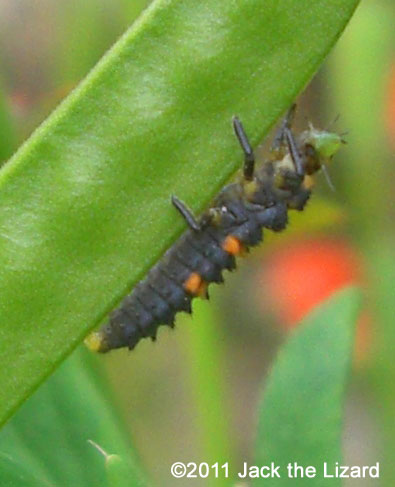
The Larvae is eating an aphid. |
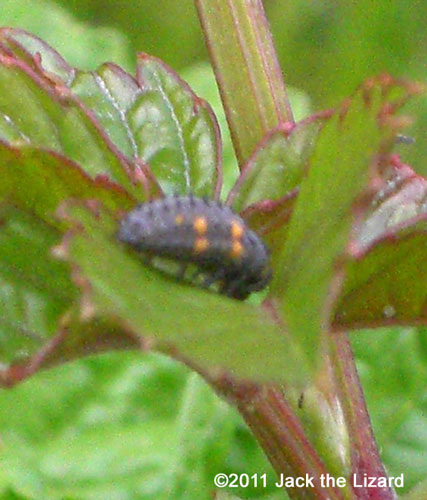
Seven-spotted Ladybug at larvae stage |
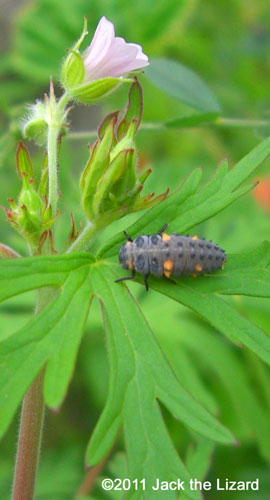
|
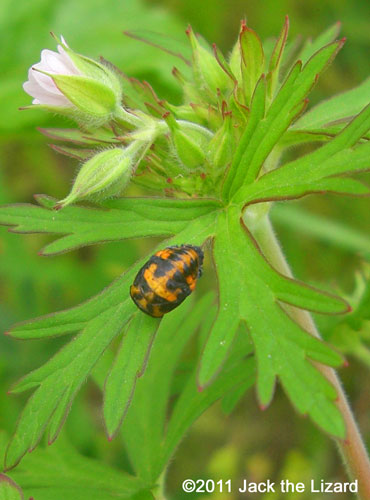
|
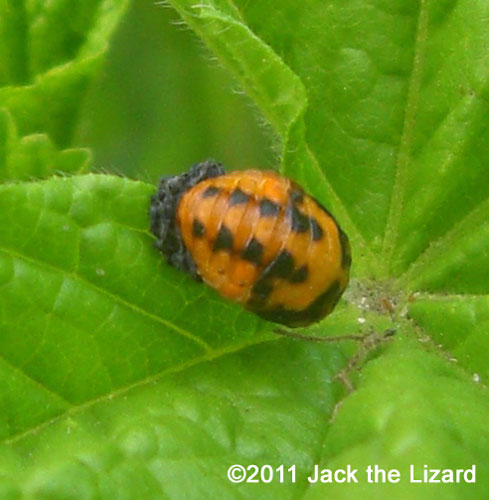
Seven-spotted Ladybug at pupa stage |
Tactics of protection

Seven-spotted Ladybug is eating an aphid. Menochilus sexmaculatus is behind. Flying bee is Dinocampus coccinellae.
Where do you find coccinellidas?
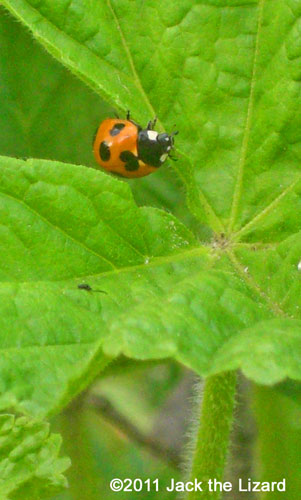
|
They can be found on the plants in which aphids and scale insects live. Those plants are such as mustard plant, buckwheat, coriander, clover, cosmos, dandelion, vetch, and so on. 
In winter, take a look at cracks of trees, rocks, or buildings on the sunny side. They also avoid the cold air by hiding themselves beneath fallen leaves in the forest. |
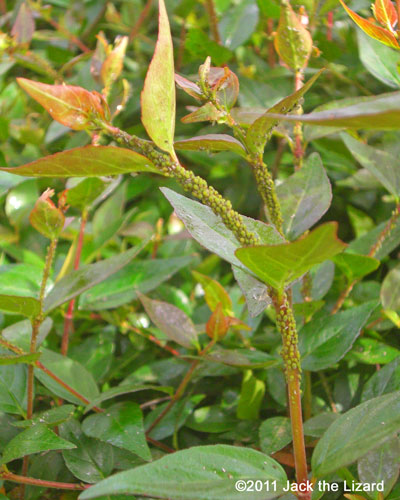
The plant is covered by aphids. |
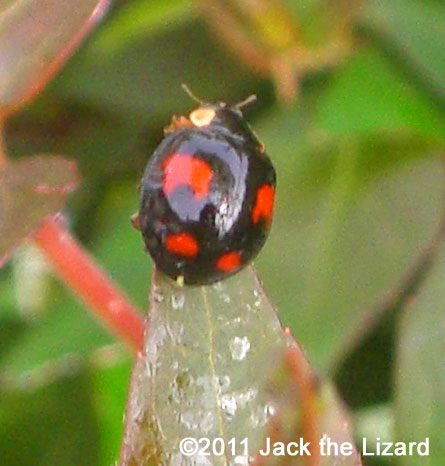
|
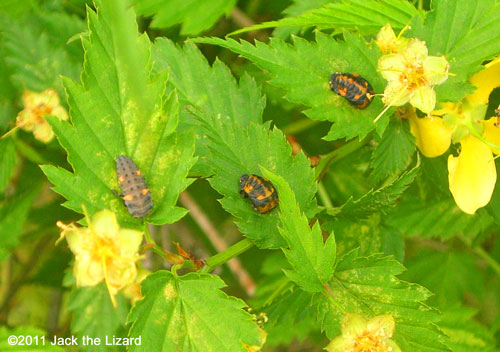
|
Rescuers in the farm yard
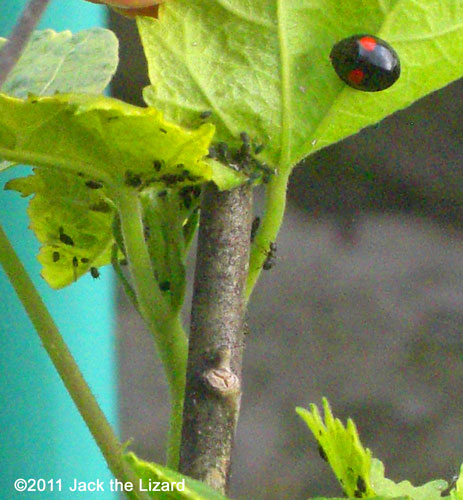
|
Since they eat many of the pests in the agricultural field, Harlequin ladybug (Harmonia axyridis) was introduced to North America in 1988. They have been helping farmers to control aphids which are harmful for the farm products. Meanwhile there is also negative effect though. The native coccinellids are reducing its population. Probably they are losing competition with foreign species. 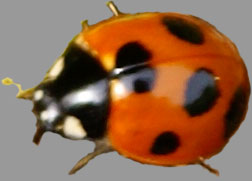
On the other hand some coccinellids are herbivorous. For instance 28-spotted potato ladybird (Henosepilachna vigintioctopunctata), or called Hedda beetle, are easily found on egg plant leaves. Unfortunately they are considered as a pest. |